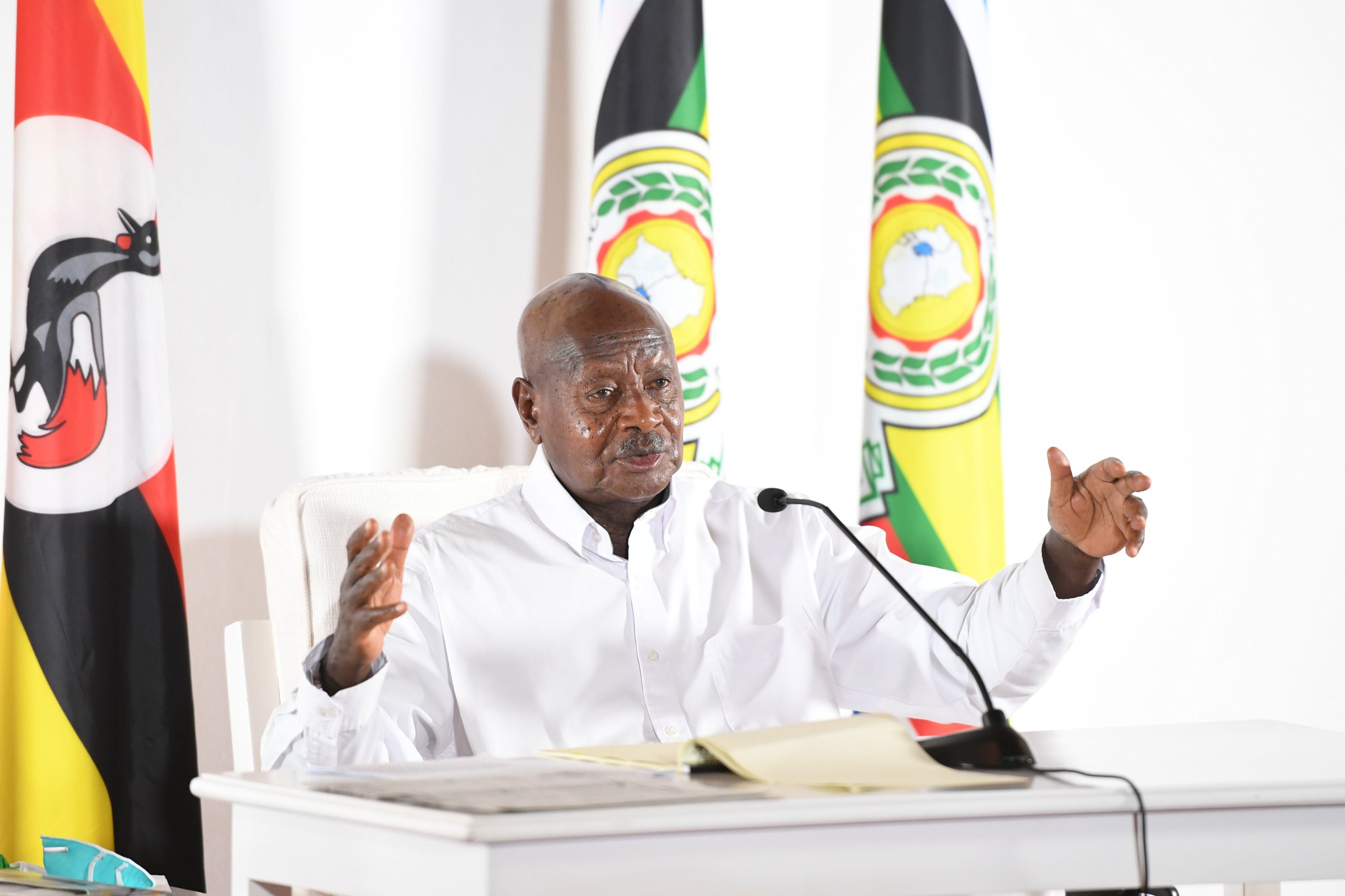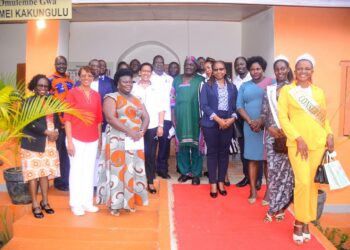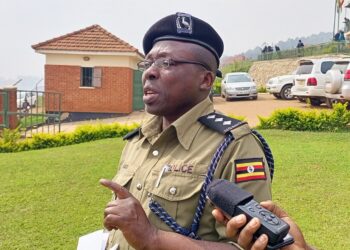Today marks the 42nd day since I instituted the lockdown on 18th June 2021. The lockdown was guided by rapidly increasing daily cases, increasing positivity rate, high admission rates in hospitals for severe and critically ill patients and increasing number of deaths. Therefore, I had to intervene to protect the health system from getting overwhelmed by many cases and the population from massive deaths.
During the period of the lockdown, data generated by the Ministry of Health has shown;
- A consistent reduction in daily confirmed cases from the peak of 1,735 to an average of a new low of 71
- A consistent drop in positivity rate from the highest of 22% to an average of 8% to-date
- A fall in the daily admissions of the severe and critically ill patients from 204 at the peak to less than 50 per day, to-date.
- A reduction in daily deaths. However, the drop in the daily number of deaths remains slow due to late presentation to the hospitals.
I would like to appreciate the population for adhering to my directives during this lockdown which has resulted in the above mentioned achievements.
As of 29th July 2021, the country had registered 93,927 cumulative confirmed cases of COVID-19, 83,115 recoveries, and 2,690 deaths.
Currently, there are 626 patients admitted in various hospitals. A total of 597 are in public health facilities and 29 in private health facilities.
Of all the confirmed cases, 53,000 representing 56%, have happened in this second wave from the month of April, 2021 to date.
The previous and current lockdown are part of preventive health interventions to contain the outbreak in order to protect lives and reduce deaths.
This is in addition to the Government strategy of mass vaccination.
Government is using a multi- pronged approach to secure adequate vaccines for the target population of 22 million, 18 years and above. Scientists have informed me that children above 12-18 years can also be vaccinated using the Pfizer vaccine. I have directed the Ministry of Health to include this age group in their estimates and plan holistically.
The following options are being used to access vaccines from the global market:
- Purchase of vaccines through the COVAX facility
- Purchase of vaccines through the African Union
- Purchase of vaccines from manufacturers
- Donations through the COVAX Facility
An order of 2 million doses of the Johnson and Johnson vaccines has been made with the African Union and a down payment of USD 3 million effected. Delivery will begin in August 2021.
I have been informed that tonight, 30th July 2021, we are receiving donations of 286,080 doses of AstraZeneca vaccine from Norway and 300,000 doses of the Sinovac Vaccine from China. I would like to thank both the Government of Norway and People’s Republic of China for prioritizing the lives of Ugandans.
In addition, in September 2021, we are expecting 647,000 doses of the Pfizer vaccine from USA, 688,000 of the AstraZeneca vaccine from the COVAX Facility and 299,000 doses from the United Kingdom. This gives a total of 1,634,000 doses of vaccines which will cater for 817,000 people. Although these are donations, I have directed the Ministry of Health and Finance to urgently secure vaccines for Ugandans.
Due to the hoarding of vaccines by the international countries, Uganda is embarking on its own vaccine manufacturing capacity. To-date, 3 candidate vaccines are at different stages of trial. Whereas this may take us some time, this is an effort in the right direction. This is an endeavor that the country will pursue to disentangle itself from dependency.
As of today, a total of 1,139,260 doses of the AstraZeneca vaccine have been administered to the population countrywide; 902,293 people have received the 1st dose while 233,950 have received the 2nd dose.
During this second wave, I was informed of the challenges faced by the COVID-19 Treatment facilities due to inadequate medical oxygen.
Government is enhancing the existing oxygen production and supply at the National and Regional Referral Hospitals in Uganda to cater for both the COVID-19 cases and other Essential Medical services.
The procurement of Gaseous Oxygen Plants (Pressure Swing Adsorption) is ongoing and these will be installed in all the 15 Regional Referral Hospitals and Bombo Military Hospital. In addition, a similar oxygen plant with a bigger capacity will be installed at Mulago Hospital. Furthermore, three (3) cryogenic (Liquid oxygen) Plants will be procured and installed strategically in 3 regions of the country to complement the Gaseous Oxygen production. The Ministry of Finance has already provided funding for this. This will solve the current oxygen crisis.
Relief for the Most Vulnerable Population in Cities and Municipalities
On 18th June 2021 when I instituted the lockdown, I directed the Prime Minister and the Minister of Gender, Labour and Social Development to define and identify persons who depend on daily income in cities and municipalities who were affected by the lockdown; assess their needs during the lockdown period; and suggest interventions to take care of their needs.
From our experience with food distribution in the lockdown of 2020, Cabinet decided that each of the selected 501,107 vulnerable persons in Kampala, the 10 Cities, and 31 Municipalities should be given UGX 100,000/= (One hundred thousand shillings) so that they can buy food of their choice.
The category of people identified included the following:
| S/N | Category |
| 1. | Bus/taxi drivers, conductors |
| 2. | Baggage carriers, wheelbarrow pushers, touts, traffic guides and loaders in taxi, bus parks and stages, and other major commercial centers such as Kikuubo |
| 3. | Barmen, DJs, barmaids, waiters and bouncers |
| 4. | Bar, gym and restaurant workers |
| 5. | Food vendors in bus, taxi parks and arcades |
| 6. | Artists (musicians, comedians etc.) |
| 7. | Boda boda riders, special hire drivers and uber drivers |
| 8. | Salons, massage parlor workers |
| 9. | Teachers and support staff in private schools and teachers in government schools not on the government payroll |
| 10. | Car washers |
| 11. | Slum-dwellers/ghetto residents |
| 12. | Street and food vendors, shoe shiners and cobblers |
The beneficiaries were selected from administrative records held by the urban authorities and town clerks.
I have been informed that as of Friday, 30th July 2021, 500,945 beneficiaries out of the target of 501,107 (99.97 percent) had been uploaded on the online registration system.
A total of 462,387 (92.3%) beneficiaries had been verified and paid by Post Bank as of today. This totalled to UGX 47,429,346,525.
The balance of 38,558 persons (7.7%) has been deferred for various reasons which are still under review by the town clerks before resubmission for payment.
I am told that the online system which we have used to register beneficiaries and submit their detail to Post Bank for payment was designed by my bazukulu who are Information Technology Specialists at National Information Technology Authority (NITA-U) and the Ministry of Gender, Labour and Social Development. I have further been informed that if private consultants had been procured, the development of this system would have cost the Government at least UGX 500 million. I therefore would like to thank these bazukulu for being patriotic and saving public funds.
Local therapeutics
Our own scientists are at working around the clock to find solutions to attack the corona virus. They are at different levels of development of treatment remedies using our own natural products.
I am aware that several Ugandan teams have now discovered natural extracts that could have therapeutic benefits against COVID-19. I am thus working with many Ugandan scientists to ensure we follow the international standards and guidelines to avoid being labeled inferior and thereby sabotaged by the international players. The molecules referred to here act in a similar manner like all the drugs that have been recommended by the World Health Organization.
For example, the one by Dr. Nambatya, known as UBV-01N has molecules that stop the body from excessive reaction and self-destruction.
The one by Prof Patrick Ogwang of Mbarara University called COVIDEX; and Dr. Alice Lamwaka from Gulu University, Covilyce-1 have direct effects on the virus, as well as dampening ‘self-destruction’ effects of the virus (‘panic crisis’).
Therefore, a few Ugandans and other international skeptics shouldn’t undermine our home-grown scientific efforts by telling lies about our efforts. Also, the scientists involved must follow the globally prescribed steps so that we don’t give our enemies the chance to shot down our products.
Last and more importantly, we must protect the intellectual property rights of the scientists involved. I have heard of arguments around ownership of the patents and trademarks, but this is a straightforward issue. These belong to the scientists who discovered them. If the institutions that employ these scientists want to benefit from their innovations, they should levy a sort of tax, what the technology transfer experts refer to as sharing of royalties. Even then, much of the proceeds should go to the inventor so that we encourage our scientists to discover more.
Community Engagement
The Ministries of Health and Local Government developed a Community Engagement Strategy, community surveillance and homebased care guidelines and disseminated these to all districts and reoriented all the district local governments.
During the lockdown, I am informed that the following were undertaken;
- The District Task Forces (DTF) were oriented to coordinate and supervise Home Based Care
- The VHTs /Community Health Workers were trained on community-based disease surveillance and home based care
- The District Task Forces assigned one District Home Based Care coordinator and one Village Health Team member to provide feedback and updates on community engagement interventions through the established structures from parish level to the district.
- A mechanism for collecting information on positive cases under Home Based Care from the communities through the health facilities was established and is functional
- Funding has been provided to the Local Governments to facilitate this procedure
I now direct the Ministry of Local Government to strengthen the Community Engagement Strategy as a means of mitigating the effects of the pandemic at community level.
Government Financing towards the COVID-19 response
Government response is guided by two costed plans; COVID-19 Response Plan (March 2020 – June 2021) and the Resurgence Plan (July 2021 – June 2022). This has guided budgetary allocation for; public sensitization, provision of free care and treatment in all Government treatment facilities, ambulance services in all regions of Uganda, enhancement of bed capacity, set up non-traditional treatment facilities (Namboole), procurement of vaccines and oxygen plants, relief support for the most vulnerable population and support to community interventions in Local Governments.
Review of the Lockdown measures
You will recall that when I instituted the 42 days lockdown, I said that I will review the restrictions if the situation improves as indicated above.
Following the 42-day lockdown, the National Task Force considered the following parameters to revisit the restrictions:
- The current level of COVID-19 transmission as shown by the drop in cases, positivity rate and hospital admissions
- Adherence to SOPs by the population
- Economic considerations for the country, and the wanainchi
- Current coverage of vaccination
- Prolonged effects of the pandemic (17 months) on the wanainchi
In addition to the above, the National Planning Authority (NPA) has made projections on the potential effects of the different interventions and the likely outcomes. Their model analyzes a number of factors including; COVID-19 cases, Human Development Index, Geographical factors, population density, age structure and weather among others, to give projections of the COVID-19 new case trends.
They looked at 3 options to analyze how the current cases that average 300 per day might increase or decrease based on either; full opening up (zero lockdown), no opening-up (Full Lockdown), or Partial opening-up.
The result of their modelling is as below:
- Fully Opening-up (zero lockdown measures)
Within 28 days, new cases will average about 500 per day with a weekly average of around 2,000. This measure will take the country directly into the 3rd wave.
- No Opening-up (continue with full lockdown)
With this option, the country will have 30 new daily infections and a weekly average of 246 new cases in the coming 28 days. This measure has strong and positive health benefits as the cases will reduce drastically but it has negative economic consequences that will impact the economic and social well-being of the people.
- Partial Opening-up (allow economic sectors to operate)
This model projects an increased number of cases in the first week to an average of 309 new cases per day and eventually coming down to 85 new cases by the third week. The initial increase of cases is due to the increased movement of people in the opening week. Everyone will be coming out after the 42 days of closure and this may spike the infection rates.
Cases are projected to further reduce to about 66 new cases per day by 28 days after partially easing the lockdown, based on this model. It is therefore important to ensure that there is strict observance of SoPs within the partial lockdown period so as to curb the spread of the virus.
The graph below shows the different 3 scenarios for opening up the country
Figure 1: Options for opening up (model run on 26th July 2021)
Based on the scientists advise and NPA projections, I now revise my directives as follows:
| S/N | THE ISSUE | DIRECTIVE |
| 1. | Curfew time was set at 1900Hrs to 0530 Hrs. | · Curfew time is maintained at 1900Hrs to 0530 Hrs. All persons except security personnel on duty and those authorized to move should be in their homes.
· This is intended to avoid breaching of guidelines, SOPs and thuggery under the cover of darkness. |
| 2. | Boda-Bodas movement was restricted to 1700hrs and only allowed to carry cargo | · Boda-Bodas are now allowed to move up to 1800hrs. Beyond 1800hrs, no Boda-Bodas should be on the road.
· They are now allowed to carry one passenger at a time or cargo. · They should strictly maintain SOPs. Wearing a mask is a MUST for both the rider and passenger. · The Boda-Boda Associations are directed to regulate themselves. · Failure to comply, this directive will be reversed to the earlier position. |
| 3. | Kikuubo was closed | Kikuubo should open under the following conditions:
· All kiosks within corridors of buildings should be removed for purposes of decongesting pathways. · Roadside vending within Kikuubo is banned. These will be relocated to alternative venues where vending is permitted by KCCA. · Kikuubo should remain a wholesale trading centre. · The Ministers for Kampala, RCC, KCCA and enforcement agencies to ensure compliance. · Manufacturers, wholesalers and traders should open outlets in the various towns and business centres in the outskirts of the Central Business District. · Traders should adapt to e-commerce. |
| 4. | Malls, arcades and other business centers were closed | · These can open and must strictly follow these guidelines:
– Compliance to all SOPs – Presence of compliance officers is a MUST. – Corridors and access ways have to be clear – Adequate lighting and ventilation. – Dedicated entry and exit – Install CCTV cameras where they are absent – Proper hygiene and sanitation facilities – Registration of shop owners and attendants is a MUST. Only those arcades that conform to the above guidelines will be allowed to open. In addition, failure to conform to any of the above will lead to closure. |
| 5. | Burials were restricted to a maximum of 20 people. | · This should be maintained until the population is sufficiently vaccinated. |
| 6. | Weddings were restricted to a maximum of 20 people. | · This should be maintained until the population is sufficiently vaccinated. |
| 7. | Places of worship were closed. | · This should be maintained as closed and will be reviewed after another 60 days.
· Alternative means of worship i.e. online, radio and TVs are instead encouraged. · A maximum of 10 leaders are allowed to lead the virtual prayers. |
| 8. | Outdoor sports events were allowed with restrictions | · The International and local accredited sports events are allowed under strict observance of SOPs (no spectators, mandatory testing of players and officials within 72 hours of the event).
· Outdoor individual sport activities are allowed under strict observance of SOPs. · Indoor sports activities including gyms, pool tables remain closed. · Gaming and betting remain closed · Casinos, theaters and Cinemas including Bibanda remain closed. · Performing artistes, concerts and comedians are advised to perform virtually. These measures shall be reviewed after 42 days. |
| 9. | Bars were closed
|
· Bars remain closed and the enforcement agencies are directed to arrest and charge both revellers and owners who breach this directive. |
| 10. | Restaurants were allowed to operate under strict observance of SOPs | · These should remain open under strict observance of SOPs. |
| 11. | Salons were allowed to operate under strict observance of SOPs | · These should be opened under strict observance of SOPs and guidelines. |
| 12. | Saunas and Steam bath were closed | · These should remain closed. |
| 13. | All schools were closed | · Schools will remain closed until sufficient vaccination of the eligible population and children aged 12-18 years old has taken place
· The Ministry of Education and Sports/ National Council for Higher Education and Ministry of Health should meet and plan for the possibility of a safe reopening of medical schools. · Learning should continue virtually · Ministry of Education and Sports will provide learning materials to learners |
| 14. | Reduction to 10% of Non-core staff in Ministries, Departments and Agencies (MDAs) and other formal sectors. i.e. lawyers, auditors etc | · MDAs and other formal sectors may operate at a maximum of 30% in a rotational manner.
· MDAs and other formal sectors must have compliance officers to enforce SOPs. |
| 15. | Inter-District travel by private vehicles was banned but registered tourists’ vehicles were allowed to move
|
· Private vehicles are now allowed to move across district borders carrying a maximum of 3 persons including the driver.
· Registered tourists’ vehicles should continue to move to their destinations and designated places. · Enforcement agencies and the task forces at all levels to ensure compliance. · Ministry of Health should on a bi-weekly basis flag the high-risk districts for restrictive control actions. |
| 16. | Movement in and out of the country through the airport was allowed.
|
· Entebbe International Airport will remain open.
· Ministry of Health, Immigration services, Port health and other Agencies of Government to ensure compliance to the existing guidelines such as testing, isolation etc. · UPDF medical services are directed to oversee the management of COVID-19 screening processes at Entebbe International Airport leading to secure entry and exit. · Online visa management systems be maintained. |
| 17. | Movement of cargo trucks through the land border points of entry was allowed
|
· Cargo trucks are still allowed to move in and out of the country with a maximum of two people (driver and turn man).
· Drivers should possess a negative COVID-19 test result and be allowed to move. |
| 18. | Public transport was banned | · Public transport will open at strictly 50% capacity effective Monday, 2nd August 2021. This will be reviewed every after 2 weeks.
· Taxi and bus owners’ associations must ensure adherence to this directive by their members as part of self-regulation by the appropriate associations. · There must be no air conditioning in all public transport · There must be strict adherence to the detailed SOPs and guidelines as laid out by Ministry of Works and Transport · The Public Transport Associations are directed to regulate themselves. · Failure to comply, this directive will be reversed to the earlier position. |
| 19. | Food Markets were open | · These should remain open but maintain strict observance of SOPs. |
| 20. | Seasonal markets were closed | · These should remain closed. |
| 21. | Conferences, workshops and seminars were banned. | · These remain banned except with explicit permission from the Ministry of Health and related MDAs.
· Numbers will be restricted and testing will be carried out. |
| 22. | The Joint Intelligence Committee (JIC), working together with the Technical Intersectoral Committee (TISC) were directed to closely monitor the compliance and enforcement of these directives. | · JIC and TISC are directed to continue coordinating, monitoring and enforcing compliance to these directives.
· TISC to create regional and district operations rooms to oversee the enforcement of SOPs. |
POST LOCKDOWN MEASURES
The Ministry of Finance working with Bank of Uganda, will mobilize low cost credit for Micro, Small and Medium Enterprises (MSMEs). Government will as a first step, immediately raise UGX 100 Billion through further Budget Rationalization, and participating Financial Institutions will equally contribute UGX 100 Billion. This brings total resources available for MSMEs to UGX 200 Billion. The Minister of Finance will prepare and announce details and guidelines for this support within two weeks from today.
APPRECIATION OF THE PRIVATE SECTOR
I would like to appreciate the following companies who have recently supported the COVID-19 response on top of those who I had earlier recognized during the first wave of the pandemic.
- Nile Breweries Ltd: 300 oxygen cylinders worth Ushs330m
- Absa Bank donated 160 oxygen cylinders and accessories
- Ham Enterprises : UGX 530m for vaccines
- Bidco: US$100,000
- Manufacturers who were supporting our hospitals with medical oxygen namely; BM Steel Mbarara, Casements Africa (Oxygas), Mayuge Steels, NEC/UPDF, Roofings Ltd, Steel and Tube Industries, Tembo Steels (U) Ltd, Uganda Oxygen Ltd and Pramukh Steels Ltd.
Thank you.
Do you have a story in your community or an opinion to share with us: Email us at editorial@watchdoguganda.com













